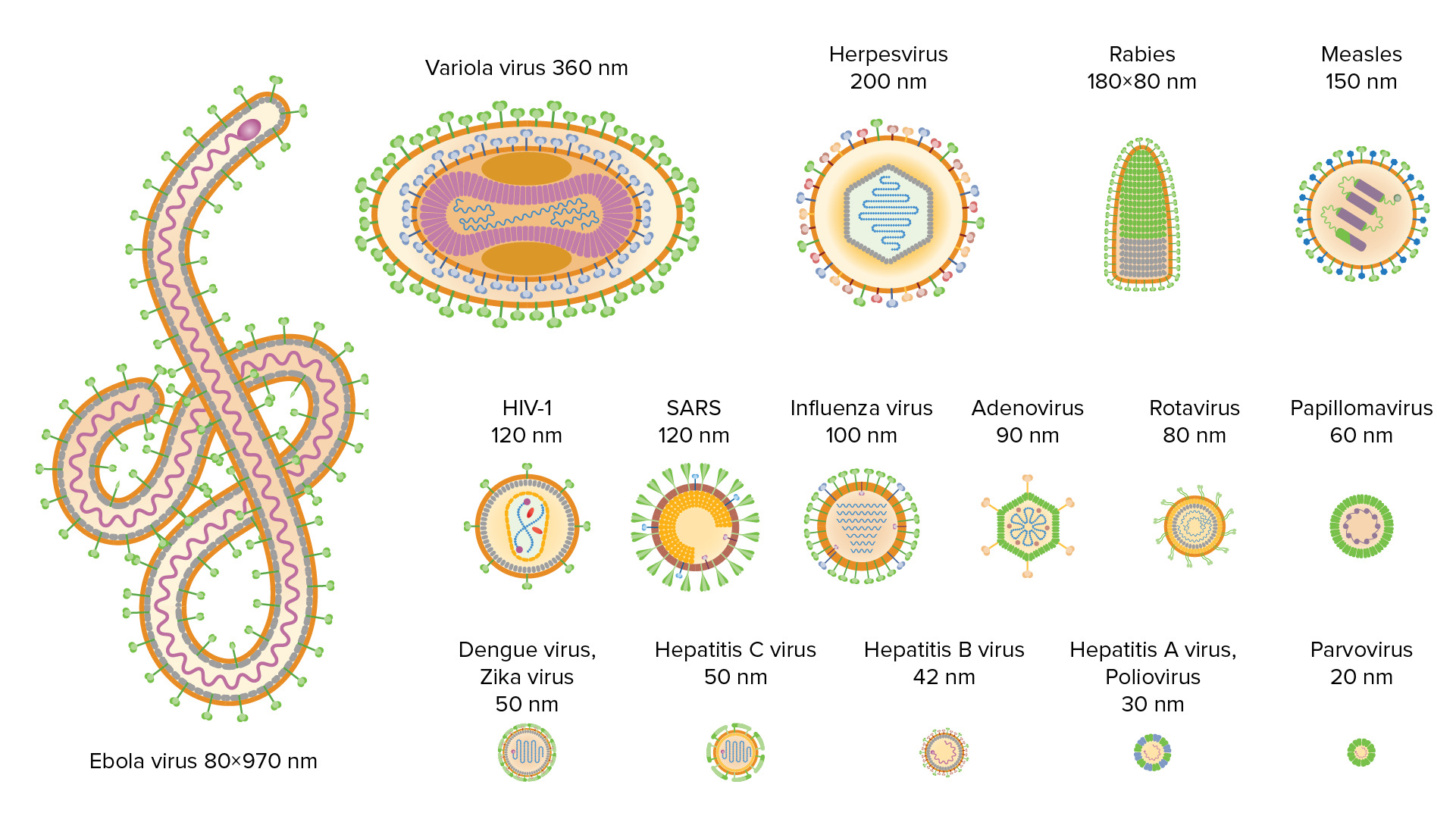Playlist
Show Playlist
Hide Playlist
Good Viruses – Viruses
-
Slides 03 Viruses MicrobiologyBasic V3.pdf
-
Download Lecture Overview
00:01 In plants there are great examples of good viruses. This is a grass called dichanthelium lanuginosum which you've probably never heard of, but it's really neat because it grows in hot places. These grasses will grow near the hotsprings in places like Yellowstone Park, so they grow at temperatures of 55°C or higher. You can bring these grasses into a laboratory and grow them in hot conditions and they will grow very well. Turns out that the ability of these grasses to grow at high temperatures is because they have within them a fungal infection. This fungus is called curvularia protuberata. It's in the leaves, it doesn't hurt the plant, but it helps them to grow at high temperatures. You can remove the fungus from the plant, you can cure the plant of this fungal infection and if you try and grow those plants at 55°C, they won't grow. Even more interesting maybe, is the fact that it's not just the fungus that's needed to grow at high temperatures. The fungus is in turn infected with a virus and if that virus is present in the fungus in the plant then the plant can grow at high temperature. Fungus alone is not good enough, you have to have the fungus plus the virus. This is one of many, many examples of good viruses that we have in nature. 01:25 Viruses in short are amazing. There are many different kinds and shapes and sizes. Let's go through just a few of them starting with a really big one, Ebola virus that has a highly unusual shape which caused a recent outbreak in West Africa. Variola viruses, the virus that caused smallpox, this has been eradicated from the face of the earth but it's also quite a large virus. Herpes viruses, these are the ones that infect all of us. We all have about a dozen infections including many herpes viruses. Rabies virus, they're bullet shaped viruses and one of the diseases is rabies, transmitted by dogs. Measles virus, once a common childhood disease, eradicated nearly by vaccination. HIV-1, which is in the middle of a pandemic at the moment. The SARS coronavirus, which emerged from China. Influenza virus, which causes yearly outbreaks of respiratory disease. Adenoviruses also causative agents of respiratory as well as G.I. tract infections. Rotaviruses, big causes of diarrhea in humans. The papillomaviruses, which include those polyomaviruses that we talked about, as well as viruses that cause warts, hepatitis C and hepatitis B viruses, agents of liver disease as well as hepatitis A virus and the very, very small parvoviruses. The viral array is astounding, these are just 16 members of this incredible array of viruses that are present on the planet, they are truly amazing, not only in size and shape, but in what they can do. 03:03 Let's start I think by defining what a virus is. And here is our definition: An infectious obligate intracellular parasite that's made up of genetic material, and it can be DNA or RNA, so unlike us, we have DNAs as our genetic material, viruses can also have RNA. 03:24 That genetic material is surrounded typically by a protein coat and then in addition it may also have a host cell membrane. Now what does this mean, obligate intracellular. 03:36 Intracellular means that a virus, in order to multiply and make more viruses, it has to get inside of a cell. It cannot replicate outside of a cell, so that's the intracellular part and obligate simply means it's necessary to get in. So infectious, it can go from cell to cell or organism to organism, it has to get in a cell to replicate and then the definition tells us a little bit about the structure of the virus.
About the Lecture
The lecture Good Viruses – Viruses by Vincent Racaniello, PhD is from the course Microbiology: Introduction.
Included Quiz Questions
Dichanthelium lanuginosum is a species of grass that can grow in the hot (55°C) soil of geothermal areas in Yellowstone National Park in the United States. Which of the following statements best describes how this special heat tolerance is conferred to the grass?
- The grass is colonized by a fungus, which is in turn colonized by a particular virus.
- A plant virus confers heat tolerance.
- A plant fungus confers heat tolerance.
- The plant is able to tolerate high temperatures despite being infected directly by a virus.
- Indirect infection by a fungus permits the plant to tolerate high temperatures.
Which one of the following best describes a virus?
- An infectious, obligate intracellular parasite comprising genetic material (DNA or RNA) surrounded by a viral protein coat and/or an envelope derived from a host cell membrane
- An infectious, variably extracellular parasite comprising genetic material (DNA or RNA) surrounded by a viral protein coat and/or an envelope derived from a host cell membrane
- An infectious, intracellular free-living organism comprising genetic material (DNA) surrounded by a viral protein coat and/or an envelope derived from a host cell membrane
- An infectious, obligate intracellular parasite comprising genetic material (RNA) surrounded by a protein coat and/or an envelope, both derived from a host cell membrane
- An infectious, obligate intracellular parasite comprising genetic material (DNA or RNA) partially or completely surrounded by a viral protein coat and/or an envelope derived from a host cell membrane
Customer reviews
5,0 of 5 stars
| 5 Stars |
|
5 |
| 4 Stars |
|
0 |
| 3 Stars |
|
0 |
| 2 Stars |
|
0 |
| 1 Star |
|
0 |




